For many people, the phrase “retirement planning” conjures up images of complex financial spreadsheets, intimidating jargon, and a level of stress best avoided. It feels like an exclusive club for finance experts, not something for the average person to tackle. But here’s the secret: it doesn’t have to be. Retirement planning, at its core, is simply about taking small, consistent steps today to build a comfortable and secure tomorrow.
This guide will demystify the process, breaking it down into a straightforward, actionable roadmap. You don’t need to be a Wall Street wizard; you just need a clear vision, a little discipline, and the willingness to get started.
Step 1: Envision Your Future Self
Before you crunch a single number, you need to answer the most important question: What does a happy, fulfilling retirement look like to you?
Retirement isn’t just about not working; it’s about a new chapter of life. Will you travel the world or spend more time with your grandkids? Do you dream of moving to a beach town or staying put in your current home? Will you launch a small business or dedicate your time to volunteering? Your answers will determine your financial needs.
This visualization step is crucial because it turns an abstract savings goal into a tangible, motivating purpose. Write down your ideal retirement life. This vision is your “why,” and it’s what will keep you on track when things get tough.
Step 2: The Core of Your Plan: Know Your Numbers
Now that you have your “why,” it’s time to get a realistic sense of your “how much.” Don’t worry, this isn’t as complicated as it sounds.
Start by estimating your annual retirement expenses. A common rule of thumb is to assume you’ll need around 70-80% of your pre-retirement income to maintain your current lifestyle. But be more specific if you can. Think about what your future expenses might be. Will your mortgage be paid off? What about potential healthcare costs, which often increase with age? Don’t forget about travel, hobbies, or other fun activities you plan to pursue.
Once you have a rough annual number, use an online retirement calculator. These free tools allow you to input your current age, income, existing savings, and your estimated retirement age. They will then project how much you need to save to reach your goal. It may seem like a huge number, but don’t panic. The key is to break it down into a manageable monthly or weekly savings goal.
Step 3: Your Investment Toolbox: Demystifying the Accounts
This is where many people get intimidated, but it’s actually where the magic happens. Think of these accounts as different types of pots you can use to grow your money.
- Employer-Sponsored Plans (401(k), 403(b), etc.): If your company offers one, this is the first place you should put your money. Why? Because of the employer match. Many companies will contribute a certain amount for every dollar you save, up to a specific percentage. This is essentially free money! Aim to contribute at least enough to get the full match. If you can, contribute even more, up to the annual limit. The money you contribute is typically deducted from your paycheck before taxes, which lowers your taxable income.
- Individual Retirement Accounts (IRAs): These are retirement accounts you can open on your own, separate from your employer. They come in two main flavors:
- Traditional IRA: Contributions are often tax-deductible in the year you make them, which can lower your current tax bill. You’ll pay taxes on the money when you withdraw it in retirement.
- Roth IRA: Contributions are made with after-tax money, meaning you won’t get a tax deduction now. But here’s the huge benefit: all qualified withdrawals in retirement, including all the investment growth, are completely tax-free. For younger people or those who expect to be in a higher tax bracket in retirement, a Roth IRA can be a powerful tool.
You can often contribute to both an employer plan and an IRA, giving you a powerful one-two punch for your savings.
The Power of Compounding: Your Secret Weapon
The single most important concept in retirement planning is compound interest. It’s the growth you earn not only on your initial investment but also on the interest that investment has already earned. It’s like a snowball rolling downhill, picking up more and more snow as it goes.
For example, imagine a 25-year-old invests just $250 per month. Assuming a modest 8% average annual return, by age 65, their account could grow to over $870,000. The total they contributed from their own pocket? Only $120,000. The rest is pure growth from compounding.
The lesson here is simple: Time is your greatest asset. Starting early, even with a small amount, gives your money decades to grow exponentially.
Step 4: The Silent Saboteurs: Tackling Debt and Expenses
You can’t pour water into a bucket with a hole in the bottom. High-interest debt, like credit card balances, is that hole. The interest you pay on that debt is a direct drain on your ability to save. Prioritize paying off high-interest debt as quickly as possible. Every dollar freed from debt is a dollar you can put toward your future.
Furthermore, make a habit of living below your means. Review your monthly expenses and identify areas where you can trim back. Small changes, like reducing restaurant meals or canceling unused subscriptions, can add up to hundreds of dollars a year that can be redirected to your retirement fund.
Step 5: The Other Pieces of the Puzzle
While investments are the core of your plan, there are other important elements to consider:
- Social Security/Pensions: These can provide a solid foundation for your retirement income, but they should be viewed as a supplement, not your sole source of income.
- Healthcare: Healthcare costs in retirement can be significant. Look into your options and factor these potential expenses into your long-term plan.
- Estate Planning: Even a simple will can ensure your assets are distributed according to your wishes. This is an essential step to protect your legacy.
The Final Step: Stay the Course
Retirement planning isn’t a one-and-done event. It’s a continuous journey. Make it a habit to review your plan at least once a year. Check your progress, adjust your savings goals as needed, and rebalance your investment portfolio.
The most important step you can take today is to simply start. Don’t wait for the perfect moment or for a huge raise. Take that first step, no matter how small. Open an IRA, set up an automatic contribution to your 401(k), or simply pay off a credit card.
Your future self will thank you for it. The journey of a thousand miles begins with a single step. What’s your first step going to be?







